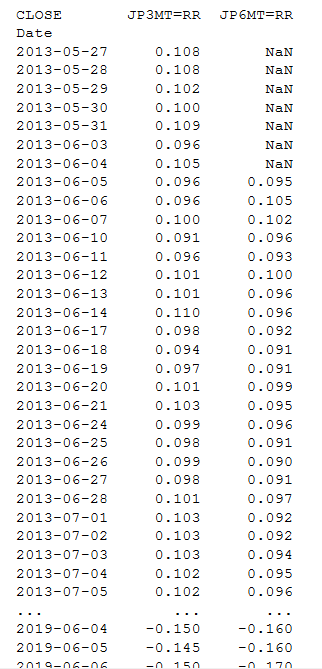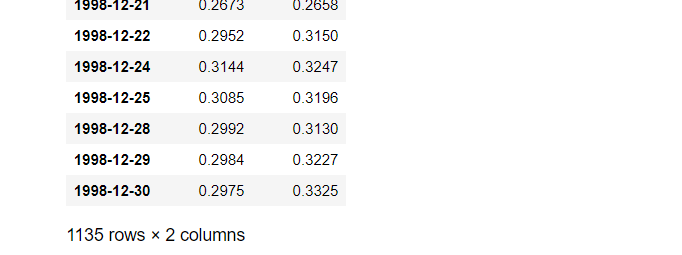Hi Team,
My client is trying to pull up the first available data point for a set of RICs. Using the ff gives him NaN list and the earliest data point pulled up is 05-27-2013:
df = ek.get_timeseries(bills, fields='CLOSE', start_date='1994-06-01', interval='Daily')

As you can see, it should give him the earliest data point available in the database which is 1994 and this is available in Eikon desktop and Eikon Excel.

Now, running the formula below, gives me the timeseries of JP6MT=RR and JP3MT=RR, where both of them automatically starts at 2013-05-27 (as per the screenshot above)
df_combined = ek.get_timeseries(['JP6MT=RR','JP3MT=RR'], fields='CLOSE', start_date='1994-06-01', interval='daily').
However, if he uses the formula below:
df = ek.get_timeseries('JP6MT=RR', fields='CLOSE', start_date='1994-06-01', interval='daily'), first available point is 04-11-2007. If he runs JP3MT=RR on its own, he will get it to start at 2007-04-11 as well. So logically speaking, if he is to run them as a combined function, he should get both of them to start at at 2007-04-11, and not 2013-05-27.
Also, why is he not able to pull up the actual first available data point which is 1994?
Thank you for your help!






